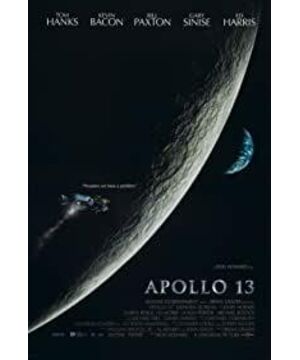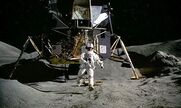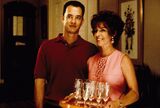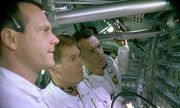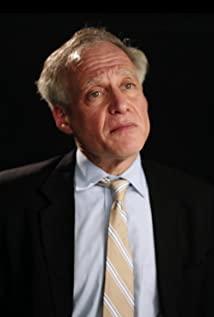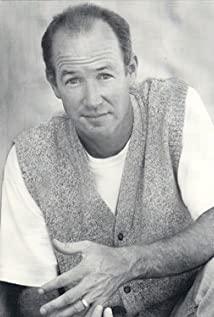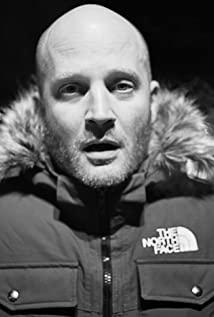The full text is 3814 words in total, and it takes about 10 minutes to finish reading
Overview
"Apollo 13" is a film directed by Ron Howard, written by William Broyles Jr., Al Lenner, Tom Hanks, Bill Paxton, Kevin Bacon, Gary West A documentary movie starring Nice, Ed Harris and others. The film is adapted from the memoir "Lost the Moon: The Dangerous Journey of Apollo 13" by Jim Lovell and Jeffrey Kruger, which tells the story of Jim Lovell (Tom Hanks), Jack Swift (played by Kevin Bacon) and Fred Hayes (played by Bill Paxton) returned safely after the Apollo 13 accident after extraordinary efforts and spare ground support story. After the film was released in 1995, it received a certain degree of praise in the society, and won the Oscar for Best Film Editing, Best Sound Effects and nine nominations the following year. The film is quite brilliant in art design and sound, but relatively good in directing and acting.
art design
The art design of this film is excellent in the accuracy of restoring the scene. Because the film is adapted from a real event, it is extremely important to restore the scenes, costumes and props of the event, and the degree of reduction in this film is extremely high. For example, the spacesuit worn by the astronauts in this film is no different from the real spacesuit. It has detachable helmets, gloves and other parts, and also has a hose interface (for gas exchange). These accessories are all exquisitely crafted, making the entire spacesuit look very professional and there is no obvious difference from the naked eye of NASA's spacesuit. The spacesuits in the movie are even close to aerospace-class airtightness. On the other hand, the setting team also has a very high degree of professionalism, and its layout of the Houston Space Command Center hall has a very high degree of reduction. Allegedly, former space agency members who served as consultants said that the scene was restored perfectly. The scenes of the Saturn V launch in the film are also very well made. Even the scenes of the ice on the arrow being shaken down due to the low temperature are simulated, which shows the production team's intentions. The spaceship in the movie is no different from the real one (at least to the naked eye), and even the damaged damage is very similar. Here, I have to thank the dedicated art designers again.
sound
James Horner was responsible for the original sound effects of this film. James Horner is one of the most prestigious soundtracks in the United States in the 1990s. In addition to "Apollo 13", he also dubbed "Titanic", "Avatar" and other films. The advantage of his heyday music is that it can be closely integrated with the plot of the movie. In "Apollo 13", the Odyssey's re-entry soundtrack is an excellent embodiment of this characteristic. During the re-entry process, when the soundtrack is on the ground, the sound is lighter, and it is basically only played on the violin. This high and light tone, combined with its slow rhythm, gives people a terrible and fearful feeling. When the camera turns to space, the soundtrack becomes more variable, and the sound becomes louder, giving people a feeling of excitement. Finally, when the return capsule resumes communication with the ground, the soundtrack becomes cheerful, echoing the plot of the movie. More importantly, the switching of these three soundtracks is very natural. This kind of soundtrack is in line with the characteristics of the movie screen and also appeared in his other movies. James Horner’s soundtrack contains a lot of orchestral music; not only that, he also loves Scottish bagpipes and Irish whistles (the Irish whistle is included in the main theme of "My Heart Is Still"). James Horner's preference for orchestral music is reflected in these three films: basically all the soundtracks are mainly classical brass and string performances. This gives his music the ability to express emotions softly. But this ability is a double-edged sword; in "Titanic", it expresses the sad and moving sadness very well, but in "Apollo 13", this kind of overly soft emotional expression makes the whole movie A little bit less majestic, a little more warmth. James Horner often "plagiarized" his previous works in his later works. Many of the soundtracks in "Avatar" give people a sense of deja vu. This excessive repetition makes the film soundtrack lose its freshness and become formulaic, unable to express emotions to the audience well. However, "Apollo 13" caused a unique style (more majestic) so it escaped and did not contain too many similar tracks. All in all, the soundtrack of "Apollo 13" is still good. Although the sense of majesty is lacking, the overall emotion expressed is still in place.
director
The director of "Apollo 13" is Ron Howard. He has also filmed "Warm Family", "Beautiful Mind" and other films. "Apollo 13" can be described as a turning point in Ron Howard's career as a director. Before that, most of his films (such as "Cozy Family") were comedies, but after that, they became more diverse. When filming "Apollo 13", Ron Howard had not yet fully mastered the shooting methods of documentary films as he did when filming "Beautiful Mind". Therefore, some of his habit of making comedies remain in "Apollo 13." For example, in "Warm Family", there is a pornographic joke about masturbation. In "Apollo 13", similar pornographic jokes are presented at the beginning of the film in a sexually suggestive way of dialogue between Jack and a girl about the docking. But in "Apollo 13" there are also many Ron Howard's documentary film styles. Ron Howard’s "Apollo 13" and "The Beautiful Mind" are both highly related to science, but in both films he did not focus on science (the entire "Beautiful Mind" does not elaborate on whether the Nash equilibrium is What, and "Apollo 13" also did not explain why the liquid oxygen storage tank will have an accident, how the astronauts' orbital maneuvers can help them return to the earth and the moonshocks they created), but it takes science and focuses on describing people. s story. This helped him succeed in a sense, because it made the movie less boring and more popular.
Performance
The actors in this film are generally very dedicated, their performances are logical and they can express certain emotions. They (the three leading actors) even mastered certain skills in piloting the spacecraft. However, Tom Hanks's performance was not outstanding in the movie. First of all, his performance is somewhat artificial, the emotional expression is too sudden, and it seems very unnatural (he has directly changed from calm to violent in the movie many times). Secondly, there is a certain discrepancy between his performance and reality. His character Jim Lovell is left-handed in reality, but he refuses to use his left hand to write. However, Kevin Bacon’s performance was quite brilliant. His performance with regard to the team’s worry and dedication was reflected in his jokingly saying that the note he posted was to avoid his own operation mistakes and drop the other two astronauts. The incisive and vivid. The two supporting actors Ed Harris and Catherine Quinan also performed very well. Ed Harris's tough language and actions are a good example of the toughness of the director of the flight control center he plays. And Catherine Quinan's insistence on being worried about propping up the whole family after learning of the spacecraft's accident is a manifestation of the strong and independent qualities of contemporary women. It is worth mentioning that the weightlessness scene of this film was shot during free fall in a Boeing 707, and no special effects were used. Therefore, the actors still paid a lot of effort.
—————————————— The following content contains a lot of spoilers, please read carefully—————————————
Role
The main characters in the film are real people, but the characters in the film have the personal understanding of the filmmakers. In the movie, James Lowell, Fred Hayes and Ken Martinley are a team that has a very good relationship. Jack Sweigert was an intruder in this small team when Ken Martinley quit for some reason. James Lovell is a leader who will protect the interests of team members, but his some hot temper has also caused some problems, for example, he has great conflicts with some NASA officials. Fred Hayes is also a person who cares about his friends, but his temper caused him to loathe Jack irrationally because Jack "robbed" his partner's position. But Jack didn't stop working because he was disgusted. He still worked dutifully for the new group. It was finally he was accepted. Gene Kranz is a typical responsible and strong leader in the movie. He demonstrated his intelligence very well when confronting the gloating media. Marilyn Lovell is the role of a good wife and mother. She underwent the pressure alone and struggled for the whole family. All in all, the characters in the movie are all real, so they don't have very outstanding characteristics, but they are all brilliant ordinary people.
Narrative
This article adopts a narrative strategy from a personal perspective. The film neither mentions the influence of the entire Apollo 13 incident team in the United States or the international community, nor does it mention the very technical cause and detailed process of the entire incident. Instead, it chooses to use the efforts of astronauts and ground support personnel as the entry point. , Supplemented by the reactions of the astronauts’ family members and media reports, tells how individuals reacted in this incident. This kind of narrative makes the movie easy to understand, but it also reduces the logic of the movie (someone can't even understand why the spacecraft can return to the earth through a gravitational slingshot after watching the movie). This movie has two main story lines. The first is the more obvious line to rescue the spacecraft by ground personnel, and the second is the process of the more secretive James and Fred gradually accepting the new Jack. The good thing about this two-line narrative method is that the story is more complex and shows more values.
Values
In the movie, the values of "persistence is victory" and "don't judge people by first impression" are vividly displayed. Because of the hard work of the astronauts and ground personnel, Apollo 13 was finally able to return safely. It is this kind of persistence that makes this impossible task complete. On the other hand, the process of James and Fred gradually discovering Jack's kindness also tells us that we need to let go of prejudices and observe others more objectively. More importantly, as Watney said when he was rescued in The Martian: "But seriously, they did it because it is human nature to help others. Although there are sometimes exceptions, this It’s true.” People’s nature to help people in trouble is also one of the values embodied in the film.
———————————————— Spoiler ends, please rest assured to read—————————————————
Summarize
All in all, "Apollo 13" is a good movie. Although there are still shortcomings in its music and performance, its flaws are not concealed. Its brilliant restoration and popular narrative still make it a movie worth seeing .
View more about Apollo 13 reviews


